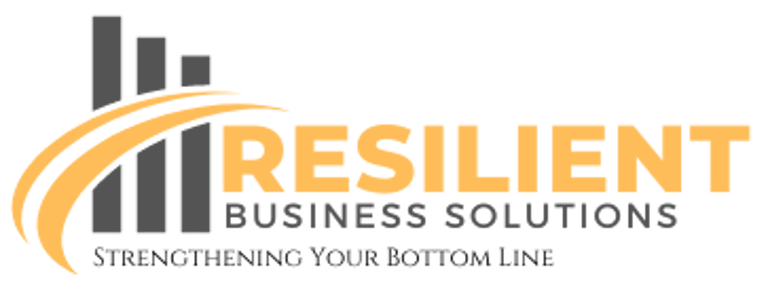How to Reduce Business Expenses Without Sacrificing Growth
Learn how to reduce business expenses without sacrificing growth with these actionable strategies. From evaluating essential expenses and outsourcing non-core tasks to leveraging technology and negotiating with suppliers, this post offers practical tips to help small businesses save money while continuing to scale efficiently.
9/10/20243 min read


Running a business comes with its fair share of financial challenges. One of the biggest hurdles is finding ways to cut costs without slowing down growth. The good news is, it’s possible to streamline your operations, reduce unnecessary expenses, and still scale your business. In this post, we’ll explore actionable strategies to help you save money while keeping your growth momentum strong.
Evaluate and Prioritize Essential Expenses
Not all expenses are created equal. Some are essential to running your business, while others may be draining your resources without providing significant returns. Start by categorizing your expenses into two groups: essential and non-essential.
Essential expenses: These are the costs you can’t avoid, such as payroll, rent, utilities, and taxes.
Non-essential expenses: These include things like excessive marketing costs, underutilized software subscriptions, and luxury office supplies.
Review these categories regularly and assess whether certain costs can be reduced or eliminated. By focusing on what truly matters, you’ll free up cash for growth-oriented initiatives.
Outsource Non-Core Tasks
Outsourcing is a great way to cut down on operational costs. Instead of hiring full-time employees to handle tasks like bookkeeping, marketing, or customer service, consider working with external agencies or freelancers. This allows you to pay for services only when you need them, avoiding the fixed costs associated with in-house teams.
By outsourcing non-core tasks, you not only save money but also gain access to specialized expertise that can improve efficiency and drive growth.
Leverage Technology for Efficiency
Technology has revolutionized how businesses operate, offering tools to automate tasks and reduce manual labor. For instance:
Accounting software: Automate payroll, invoicing, and expense tracking.
Project management tools: Keep your team organized and efficient.
CRM systems: Manage customer relationships without hiring additional staff.
By embracing technology, you can reduce labor costs and improve productivity, allowing your team to focus on high-impact activities that fuel growth.
Negotiate Better Deals with Suppliers
Don't be afraid to negotiate with suppliers. Whether it’s for office supplies, raw materials, or software subscriptions, many vendors are open to offering discounts for long-term commitments or bulk orders. Building good relationships with suppliers also helps you secure favorable terms, such as extended payment periods, which can improve your cash flow.
Go Lean with Your Marketing Budget
Marketing is essential for growth, but it doesn’t have to break the bank. There are plenty of cost-effective strategies that can drive results without a massive budget:
Content marketing: Create valuable blog posts and social media content to attract organic traffic.
Email marketing: Build relationships with your audience and promote offers with low overhead.
Referral programs: Encourage existing customers to refer new business in exchange for incentives.
By focusing on targeted, low-cost marketing strategies, you can continue growing your customer base without overspending.
Adopt Remote or Flexible Working Arrangements
One of the biggest expenses for businesses is office space. By adopting remote or flexible working arrangements, you can reduce overhead costs related to rent, utilities, and office supplies. Remote work not only saves money but also boosts employee satisfaction and productivity.
If remote work isn’t possible for your business, consider adopting a hybrid model or sharing office space with other businesses to cut costs.
Optimize Your Inventory Management
If your business holds inventory, it's important to streamline inventory management to avoid excess stock and associated costs. Adopt practices like just-in-time (JIT) inventory, where stock is ordered only when needed, reducing storage costs and minimizing the risk of waste.
Using inventory management software can help you track stock levels accurately, ensuring that you order the right amounts at the right time, reducing both costs and waste.
Focus on Customer Retention
Acquiring new customers is more expensive than retaining existing ones. By investing in customer retention, you not only lower your marketing costs but also increase the lifetime value of each customer. Here are some retention strategies:
Loyalty programs: Reward repeat customers with discounts or perks.
Personalized marketing: Use data to send personalized offers and communications.
Excellent customer service: Ensure your customers are happy, reducing churn.
Satisfied customers are likely to spend more and refer others, making customer retention a cost-effective growth strategy.
Some Final Thoughts
Reducing business expenses doesn’t have to come at the cost of growth. By evaluating your current costs, outsourcing where possible, leveraging technology, and negotiating with suppliers, you can cut unnecessary expenses while maintaining the resources needed to scale. These small changes can make a big impact, helping you achieve financial sustainability and long-term growth for your business.
When You Are Ready
Ready to simplify your business operations? At Resilient Business Solutions, we’re here to take the stress out of so many of your business tasks, so you can focus on what you do best — growing your business. Whether you need help with bookkeeping, invoicing, managing payables and receivables, content creation, or a new website design, we’ve got you covered. Contact us today to learn how we can support your business with reliable, expert services. Let’s build a resilient future together!
Strengthening Your Bottom Line
Customized financial support to empower your business success.
Get Our Free 50+ Page Small Business Success Guide Now
© 2024. All rights reserved.
